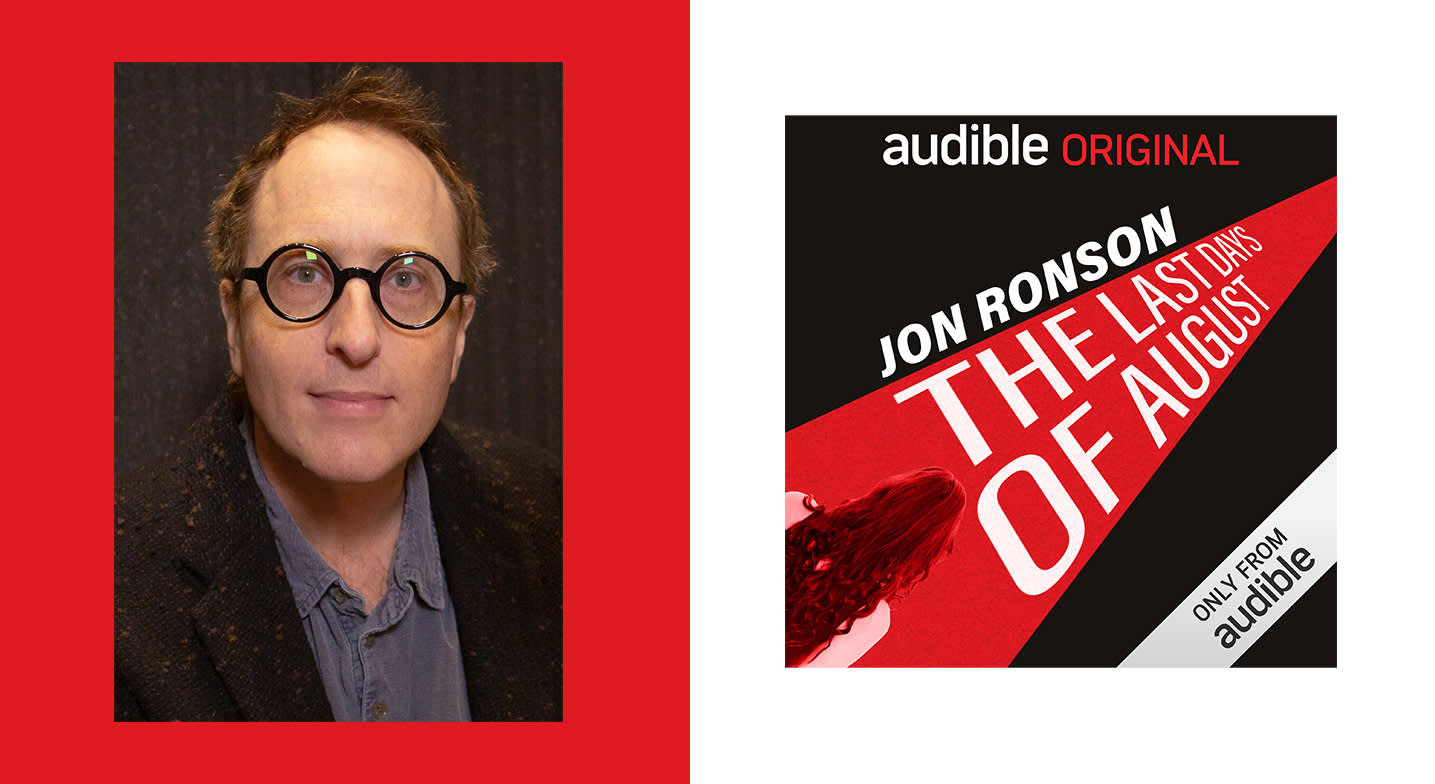When Erik Hedegaard was assigned a feature on Charles Manson for Rolling Stone, he had no idea he’d become the last journalist to interview Manson in the flesh, before the notorious cult leader died in 2017. In fact, he wasn’t sure he wanted to do the story at all. But, in a series of strange events that he would eventually process in the Audible Original Meeting Manson, Hedegaard was drawn in, with eerie echoes of the way Manson had amassed a “family” of followers in the 1960s. How did Manson do it? Why do the crimes still provoke commentary 50 years later? And why is it impossible to figure out the main motive for the murders?
Here, Hedegaard pulls back the veil on five crucial moments from his unsettling memoir, Meeting Manson, available in Audible Plus, including the chilling childhood experiences
that made him susceptible to Manson’s ploys. Play the audio excerpt for each section, then go behind the scenes as Hedegaard deconstructs each clip in his own words.
1. On our enduring fascination with the crimes

The ‘Helter Skelter’ effect
“More than 7 million copies sold since 1974.”
“I’m not sure how many books have been written about Manson over the years, but I’d wager to say that all the angles have been covered in one way or another, with everyone still guessing about the true cause. That’s one reason why the fascination endures: it’s an open-loop riddle that will never be closed. The closest anyone gets—even in the most recent works, like Tom O’Neill’s Chaos and Jeff Guinn’s Manson, and in my own scribblings—is a gross approximation. Which is both maddening, of course, and kind of wonderful, in ways that I can’t rightly explain, which is all part of it, I suppose.
“In my case, among other things, it allowed me to explore, in brief, certain past events and unexplainable bits about myself that made my uneasy dance with Manson, over the phone and in the flesh, possible. At the time, I didn’t notice it happening, but looking back at it, so many things fit. When I was a 9-year-old kid, my mother would pick up a guitar and sing
songs to me as I drifted off to sleep at night. Her favorite was a Tex Ritter tune called ‘Blood on the Saddle,’ which goes: There was blood on the saddle and blood all around / And a great big puddle of blood on the ground / A cowboy lay in it all covered in gore. It would have been a great song for Manson to have covered. I can just hear him doing it now.”
2. On getting to know Manson

Hedegard was hesitant to take the assignment
“The guy made me uneasy.”
“Near as I recall, Rolling Stone had no good reason for wanting a Manson story. Or any reason at all, other than if I could get in to see him, let’s see what happens. I spent the first year trying to weasel out of the assignment, mostly by simply ignoring it in favor of writing about smoking weed with Seth Rogen and watching Woody Harrelson smoke weed and not
offer me any. I kept asking my editors to find someone else to do the piece—Rolling Stone superstar writer Matt Taibbi would be perfect!—but they wouldn’t let up. I've often wondered why. The only answer I've been able to come up with is they knew, without knowing, that Manson would get under my skin the way he did and the way he wouldn't with any of its other writers. Certain editors can be good that way, and my two main ones—Sean Woods, who is still on the job at Rolling Stone, and the great Will Dana, who left a few years back—are among the best.”
3. On manipulating the message

Everyone has a theory
“Manson has never wavered too much in his story.”
“Everyone’s got a theory about the case, but the only theory I believe is Manson’s own: that there’s a little bit of truth to them all, even Bugliosi’s deep, dark Helter Skelter concoction. It’s just that none of them stands alone as the dominant cause of all the mayhem and death. Manson himself was a master at mixing up his messages, maybe telling one person to kill to start a race war and another to kill to free a ‘brother’ in jail on murder charges by making it a copycat crime, albeit never directly, never in so many words. This was his way. And part of the genius of many a career convict. It’s how they survive. Only, what might have worked on the inside eventually caught up to him on the outside. The lessons found in Dale Carnegie's How to Win Friends & Influence People, from which Manson apparently derived much of his so-called power, with more than 30 million copies sold since 1936 and billionaire investor Warren Buffett as one of its greatest boosters, only went so far.
“Early on during our phone calls, Manson started calling me ‘soldier.’ It was often said innocuously enough, just in passing, but it’s the weirdest thing, how a word like that can creep into your brain and take root. ‘Soldier.’ Who’s the soldier? You’re the soldier. Me, soldier? Yes, you. At a certain point, I began to anticipate Manson calling me that name and was oddly disappointed when he didn't. I felt almost rejected. In his book, Dale Carnegie made a big deal about handling people by arousing in them ‘an eager want.’ And an eager want is just what Manson produced in me with the word soldier.
“I’m not happy about admitting this. I list it as another of my many flaws in need of eventual stern correction. Then again, when he suggested I go out and kill in order to get more oxygen for myself (and for him), I did not toss down a tumbler of Popov and march right off, long knife in hand.”
4. On why average kids followed him

The question that haunts us
“When you lose your will, you can’t turn back.”
“Obviously, extreme ideologies and true believers and the harm they do have always existed, with leaders (for want of a better word) like Manson, Hitler, and any number of more recent national figures huffing, puffing and fanning the flames. What’s truly insidious is how easy it is, given the right set of circumstances, to go from strong steadfast putative bull to weak bleating sheep, flocking and following. Like I said, all those times Manson called me soldier—in another time and another place, he'd have me at least about half ready to go. We all lose our sovereignty at some point. It's how far over the edge you go that matters.
“Writ small and personal: my mother burned me with Diamond strike-anywhere kitchen matches. I used them on myself too. But that’s where it ended. I never inflicted myself, in that way, on anyone else. Nor did I ever sing ‘Blood on the Saddle’ to my own flesh and blood. But I had no one but my own inner follies urging me on either. No one like Manson. And no larger group to join forces with. Alone, maybe the Manson boys and girls did nothing. Bound together—or radicalized, in the modern parlance of terrorist culture—and Cielo Drive loomed in the distance, inevitably.”
5. On the Manson effect

The story became uncomfortably personal
“He’s a hard guy to shake.”
“When I wrote my 2013 Manson piece for Rolling Stone, I mentioned Manson rubbing my arm but left it at that. I went a little further in my 2017 Manson obituary, referencing what I called ‘snags’ in my childhood and how they made my skin ache, until Manson came along. It wasn’t until I started working on Meeting Manson that it made sense to maybe revisit the scars on my arm in a bit more depth and bring the kitchen matches out from inside the cabinets of my memory. It was always a struggle, though, not knowing how far to go, what to reveal, what to keep hidden. And then there were those past events, long forgotten for good and obvious reasons, that snuck up on me during the writing and tapped me on the shoulder. But about them, I’m not quite ready to say more.”




